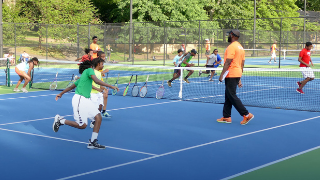IS the emphasis on school the only way to achieve the targets of SDG-4, especially when it comes to educating out-of-school children? In fact, many might see it as part of the problem rather than the solution. This is not meant to disregard the important role that school as a social institution plays in public education, but, instead, to highlight its limitations in affording inclusivity by catering to the needs of all children, especially hailing from poor, oppressed and socially marginalised backgrounds. If this point seems plausible then it is suggested that to achieve SDG-4, it is necessary to plan and act upon multiple alternative measures to ensure that no child is left out in the education process (here the term ‘education’ is broad and goes beyond schooling).
The world of school and the world of poor children are oceans apart. There often exists a contradiction between what is ‘compulsory’ for schools and what is ‘necessary’ for children hailing from poor backgrounds. The flexibility that is necessary to reconcile the two is absent, and hence, children drop out of school or never attend it in the first place.
Let us compare the two ‘worlds’ — the typical world of school and snippets from a typical day in the life of a poor child.
The world of school is comprised of a certain pattern of actions and activities governed by a set of rules and regulations. Some of the processes governed by the latter might include: admission criteria, fees, timetables, examinations and so forth. By applying the rules and regulations, the school aims to regulate time as well as the mind, body and heart of the subjects ie children. All who wish to be ‘students’ have to comply with the rules that the school sets. But such rules and regulations may not suit everybody.
The world of school and the world of poor children are oceans apart.
Contrast the school’s requirements to the world of a child who lives in poverty. Take the example of a 12-year-old boy who is forced to take financial responsibility for his family from a very young age due to the ill health of his father. What would be his normal routine? The day for this boy would begin quite early. He would go to the sabzi mandi to buy vegetables, organise his selling cart, go from street to street trying to sell his ware, and after working almost eight to 10 hours return home with a small amount of money with which to buy medicine and an insufficient quantity of food for the family. With such a routine, how can he be present at the school in a neat and clean uniform when the bell rings in the morning, marking the start of the school day?
Hence, the schools’ demands contradict the lived realities of economically deprived and socially marginalised children. Instead of being sympathetic to the situation of such out-of-school children, the latter are often labelled as ‘illiterate’, ‘uneducated’, and ‘deficient’. Such labelling needs to be challenged — if we were to only look beyond the formal literacy box of the three formal Rs (reading, writing and arithmetic) we would find that these children demonstrate a high level of social intelligence, interpersonal skills, communication skills, spatial intelligence (critical awareness of social spaces and risks) and so forth.
A challenge in this regard is that academia, including formal educational institutions, hasn’t come up with a reliable ‘translation’ mechanism that can validate these out-of-school literacies, and confer the status of ‘legitimate’ knowledge.
There is a need for ‘de-schooling’ the educational imagination globally to open up alternative modes of learning that appreciate the complexity of the lived realities of marginalised children in society. The reimagining process may benefit from identifying the ‘out-of-school literacies’ of these children and their life situations as points of departure and building blocks for improving their quality of life.
It is recommended that in designing an inclusive development for out-of-school children, instead of adopting a school-centred approach, a more sensitive view from the edge needs to be taken in order to rethink inclusive educational and social policies and design interventions to ensure the well-being and development of marginalised children.
Perhaps, the agenda of SDG-4 (equitable, inclusive and quality education for all) could be better served if the whole issue is reframed as ‘out-of-educational-reach children’ instead of ‘out-of-school children’. This flipped view can open up multiple inclusive pedagogic possibilities.
Let’s recognise that it is not the children who have ‘fallen’ out of ‘school’, but rather the ‘school’ that seems to have ‘fallen’ out of their lives.
The writer is a sociologist of education, and an educational ethnographer.
Published in Dawn, August 2nd, 2022





